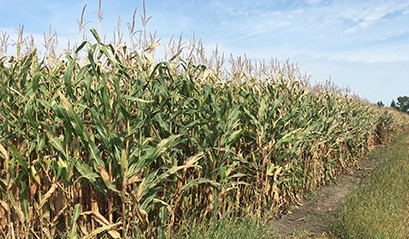Farmers reported an average yield of 167 bu/ac
By Diego Flammini
Assistant Editor, North American Content
Farms.com
OMAFRA released its 2016 Corn Seasonal Summary to help paint a general picture of the challenges and successes of the growing and harvest season.
According to Stats Canada, 2.0 million acres of grain corn and 0.250 million acres of silage corn were planted in Ontario this year.
At the beginning of the growing season, producers were faced with weather challenges.
“Cool but dry conditions prevailed for the start of the corn growing season as May transitioned from a cooler than average April,” OMAFRA said in its summary. “May remained dry, with few precipitation events to delay planting.”

Going into July, many counties including Bruce-Grey, Niagara and other parts of Central Ontario remained dry.
“Fields or parts of fields in these regions were beginning to show signs of moisture stress as corn leaves would wrap,” the summary said. “There were some concerns as corn entered the moisture-sensitive tassel and pollination stages during the hot and dry conditions around the week of July 18.”
As the growing season wrapped up, heat unit accumulation rose to higher than normal levels. As a result, corn harvest was able to start as early as the last week of September.
“Many growers reported yields that were above expectations considering the hot, dry growing season, with the exception of those on soils with poor water holding capacity, or regions which received well below average precipitation,” OMAFRA said.
Agricorp reported yields of 167 bu/ac, which is line with the 10-year average.